Jays, Crows, and Ravens
Provincial Bird The Steller’s Jay (Cyanacitta stelleri) became the Province’s official bird on December 17, 1987.
Crows, Ravens, Jays, Magpies, and Nutcrackers are all corvids (Family: Corvidae). All are medium to large by song-bird standards, boisterous, and cunning—and representatives of all are found along the shores of the Lake. Many corvids around here are mainly black or blue (Common Raven, American Crow, Steller’s Jay), a few less common ones are pied black, white, or grey (Magpie, Grey Jay).
Crows and ravens are frequently seen (and heard) around the lakeshore, and crows seem to have a particular bias towards the community of Nelson.
The most frequently seen jay in the region is the Steller’s Jay. It is found throughout the cordillera of western North America from Alaska to Central America, where it has largely displaced its relative, the Blue Jay. While related to the Blue Jay found in the rest of the continent, the Steller’s has a black head and upper body. The striking crest on its head makes this bird instantly recognizable.
There are regional variations: Steller’s in the interior of British Columbia have a silvery line above each eye and a pair of silvery lines up the forehead. Coastal Steller’s Jays have a completely black forehead or at most light blue streaks.
The Steller’s Jay is omnivorous, eating seeds, nuts, berries, invertebrates, eggs and even nestlings, although its diet shifts with the season.
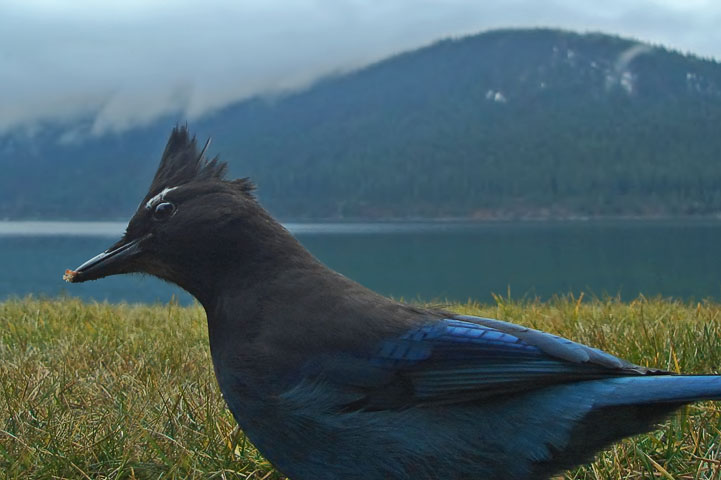 A Steller’s Jay forages on the lawn.
A Steller’s Jay forages on the lawn.
 The Steller’s Jay is found throughout British Columbia, but the subspecies found in the Interior of the Province has silvery markings on its forehead and above each eye.
The Steller’s Jay is found throughout British Columbia, but the subspecies found in the Interior of the Province has silvery markings on its forehead and above each eye.
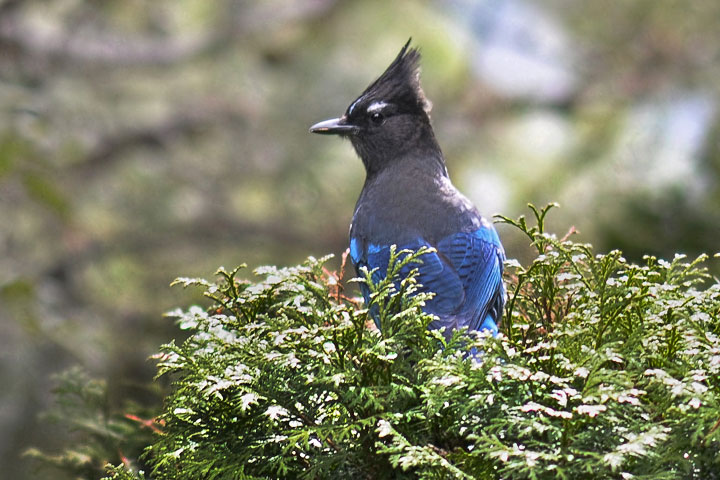 This Steller’s Jay is hanging around hoping that that the bird feeder will be filled soon.
This Steller’s Jay is hanging around hoping that that the bird feeder will be filled soon.
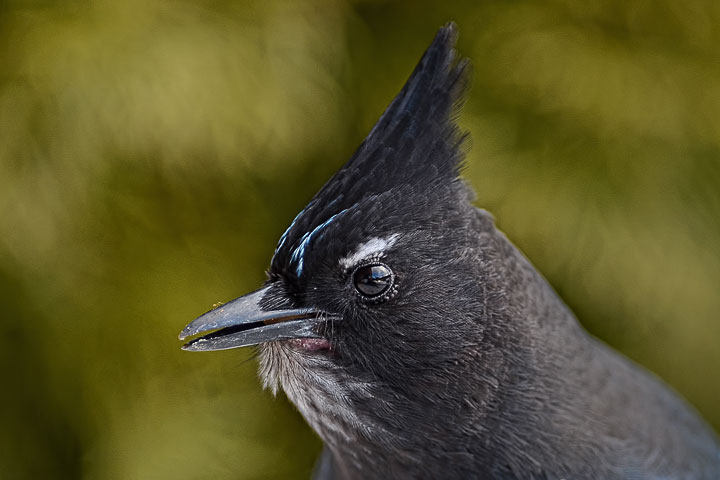 Local Steller’s Jay not only have the white markings on the head, but some of them have strikingly patch on the throat, sort of a white jabot.
Local Steller’s Jay not only have the white markings on the head, but some of them have strikingly patch on the throat, sort of a white jabot.
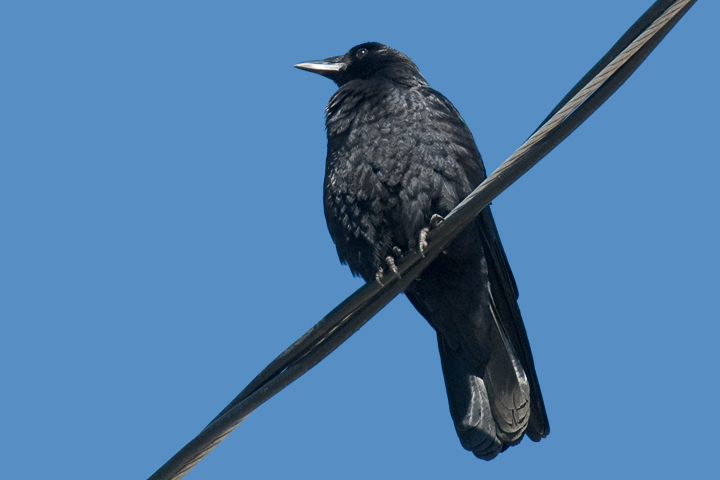 The American Crow is an all-black bird (even its bill is black). It is significantly smaller than a raven and is frequently recognized from a distance by its distinctive call: caah-caah-caah.
The American Crow is an all-black bird (even its bill is black). It is significantly smaller than a raven and is frequently recognized from a distance by its distinctive call: caah-caah-caah.
 This Common Raven with the tattered feathers appears to be undergoing a molt. In flight, the raven’s wedge-shaped tail helps distinguish it from the crow’s more rounded one. Another sign that this is a raven are the long, open primaries (the fingers of the wings) which are spread enough to see between. Kokanee Glacier is seen here in the background.
This Common Raven with the tattered feathers appears to be undergoing a molt. In flight, the raven’s wedge-shaped tail helps distinguish it from the crow’s more rounded one. Another sign that this is a raven are the long, open primaries (the fingers of the wings) which are spread enough to see between. Kokanee Glacier is seen here in the background.
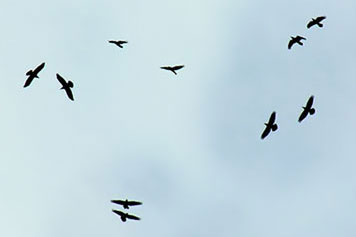 The Common Raven is the only song bird which soars for any length of time. Further, during courting, ravens often soar in pairs, as seen in the picture taken in late March.
The Common Raven is the only song bird which soars for any length of time. Further, during courting, ravens often soar in pairs, as seen in the picture taken in late March.
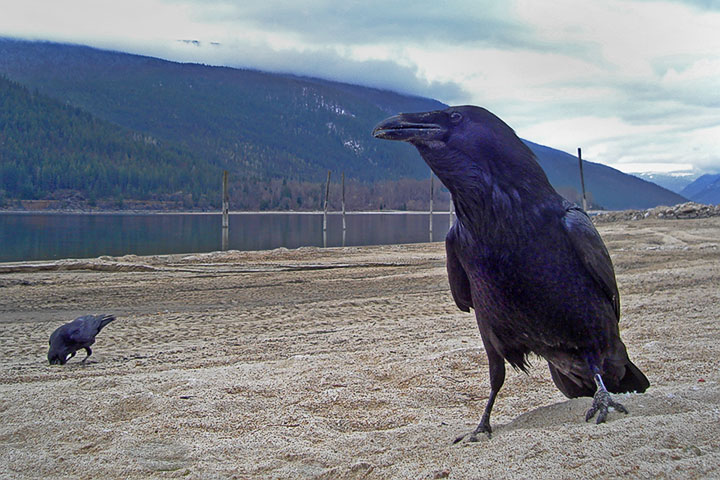 Ravens scavenging on the beach at low water.
Ravens scavenging on the beach at low water.
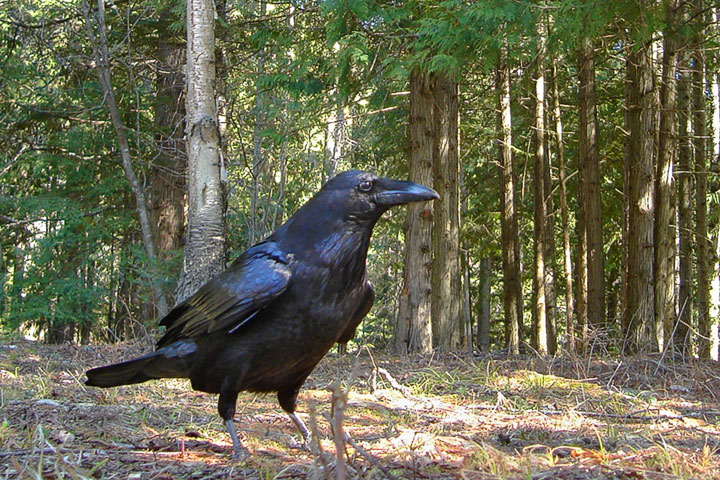 This raven was scavenging on the forest floor.
This raven was scavenging on the forest floor.
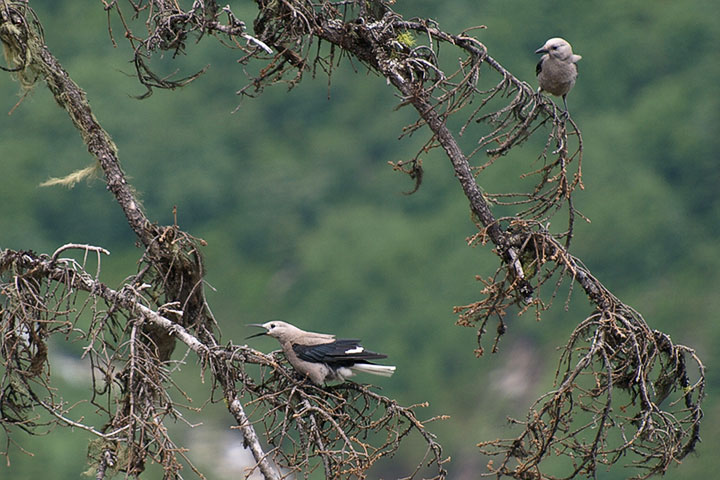 As with other members of this group, the Clark’s Nutcracker is raucous.
As with other members of this group, the Clark’s Nutcracker is raucous.  Doug Thorburn
Doug Thorburn
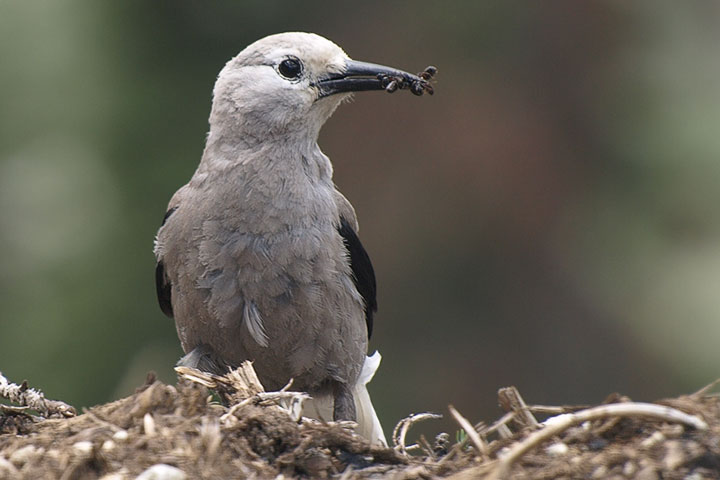 Clearly, the Clark’s Nutcracker eats insects as well as pinon nuts (pine nuts).
Clearly, the Clark’s Nutcracker eats insects as well as pinon nuts (pine nuts).  Doug Thorburn
Doug Thorburn
Information from Wikipedia: Corvids, Steller's Jay, American Crow, Common Raven.
![]()